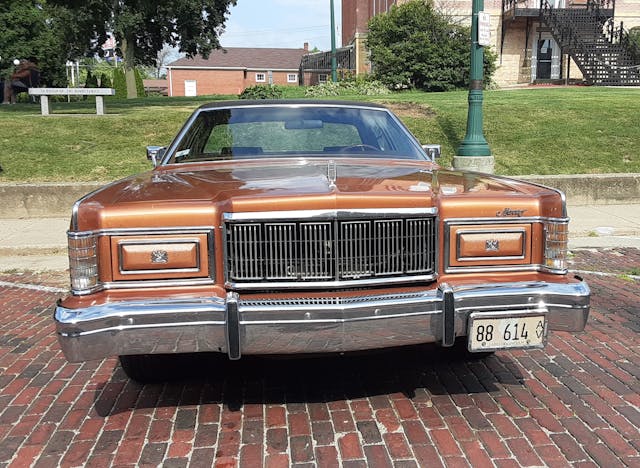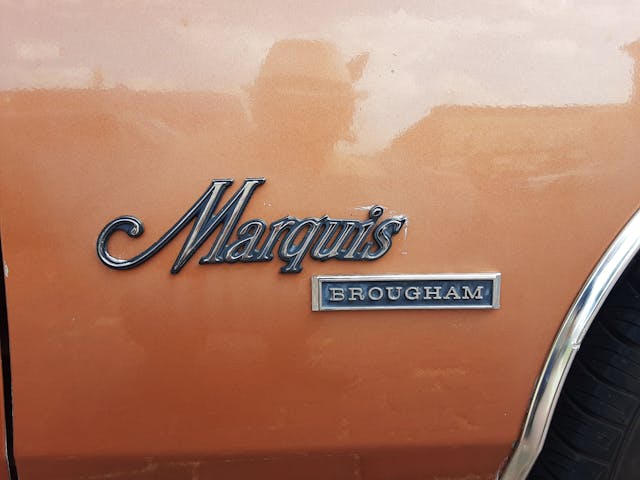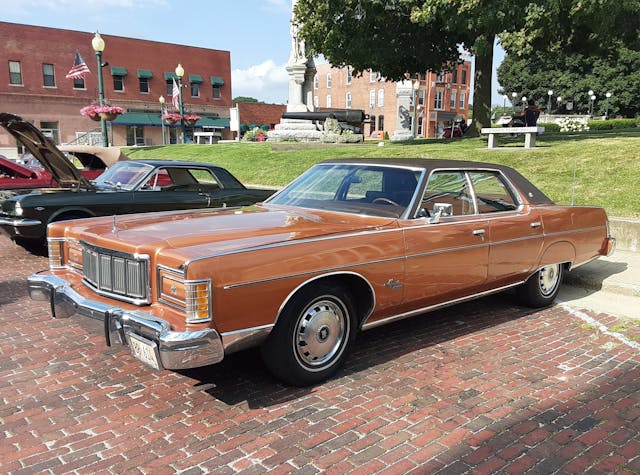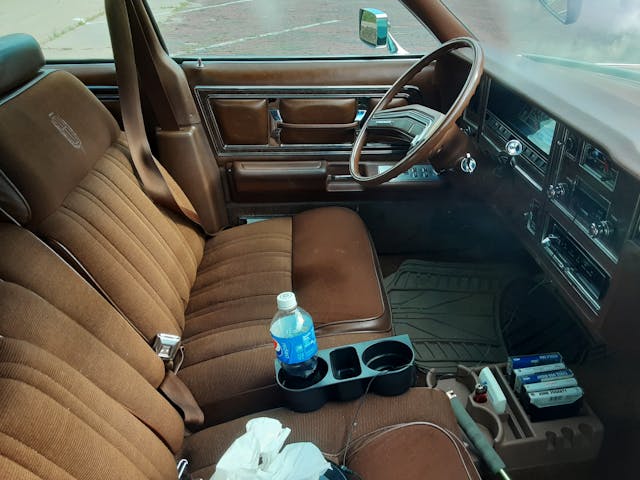Media | Articles
1976 Marquis Brougham: Bargain Lincoln, Luxury LTD or Just Right?

In the ’70s, things were going pretty well for Lincoln-Mercury division. On the Lincoln side, the massive, sumptuous Town Cars and Town Coupés gave Cadillac Coupe de Villes and Sedan de Villes worthy competition, the personal-luxury Mark outsold the Eldorado, and coach lamps, oval opera windows and crushed velour reigned supreme. On the Mercury side, the midsize Montego was an upscale choice in Brougham coupe and sedan models or woody Villager station wagon versions and the sporty imported Capri (Dad had one new, in bright yellow) provided interest. One could even get, were one so inclined, a subcompact Bobcat—essentially a Ford Pinto with a Parthenon grille. And then there were the full-size Mercurys.
I am particularly fond of the 1975–1978 versions. Heck, I love them. They were not quite as square-rigged as the Continental coupes and sedans they shared a showroom with, yet more formal than Ford LTD Broughams or top-trim LTD Landaus. The Marquis definitely had a Lincoln vibe, especially from the front with their almost-but-not-quite Lincoln grille and jewelry box lid hidden headlight doors.
Of course, given that most people shopping for full-size cars at their Lincoln-Mercury dealer in the mid-’70s weren’t likely looking for cheap transportation, most Marquis coupes and sedans were the higher trim Brougham and Grand Marquis versions, or the Di-Noc woodgrained Colony Park station wagons.
For 1975, the Marquis became the only big Mercury, with the Monterey and Monterey Custom nameplates put out to pasture. The base Marquis, however, was very close to the 1973–74 Monterey equipment-wise, with the exception of the Marquis-style hidden headlights.
Models were Marquis, Marquis Brougham, and top of the line Grand Marquis, with a Marquis wagon and wood-sided Colony Park wagon also available. When the new ’76s arrived at L-M dealerships, they were essentially the same, with no notable trim or sheetmetal revisions. Like the ’75s, they rode a 124-inch wheelbase on coupes and sedans, and a 121-inch stretch on station wagons.
Marketplace
Buy and sell classics with confidence
Our featured car is a 1976 Marquis Brougham “pillared hardtop,” which meant a fixed B-pillar, but frameless door glass. It weighed in at 4693 pounds and had a base price of $6035. 22,411 were built. The Marquis Brougham coupe started at $5955; 10,431 sold. Base Marquis sedans started at $5063 and the top-dog Grand Marquis sedan was $6528.
Marquis Broughams came standard with a 180-hp 400-cubic-inch V-8, but for those who liked towing toys such as a speedboat or Airstream trailer, a 460 V-8 with 202 horsepower was optional. This car also has the optional Twin Comfort Lounge Seats, which provided independent seat adjustment for both driver and passenger. Standard was the flight bench, which was a solid unit, much like a living room couch. If the driver moved the seat fore or aft, so went the passenger.
I had a discussion online with several friends about what color this car was painted. One said Ginger Glow, another said Medium Copper Metallic. I thought it was copper too, but a little research revealed that color was only available on Monarchs, Comets, and Bobcats. So I believe it is Saddle Bronze Metallic.
Whatever the name, it’s a gorgeous color. So much more interesting than the usual blah silvers, blacks and grays on modern cars. It looks especially rich with the contrasting brown top and interior. I spied this lovely example at the July Cruise to Mt. Carroll, in Northwest Illinois. It was one of the few events not canceled due to, well, you know. So I made time to attend, and quite a few cars showed up. It was very hot and humid, and I only lasted an hour or so before retreating back to my climate controlled Town Car, but this Marquis was my absolute favorite! Several other really nice cars were there too though, including a gorgeous navy blue 1964 Impala SS with the 409-which will you can probably read about in the near future.
Standard equipment on Broughams consisted of, among other things, Select-Shift automatic transmission, power steering and brakes, power windows, hidden windshield wipers, electric clock, fender skirts, Brougham wheel covers (but of course!), Deluxe steering wheel, deluxe seat belts, and deep cut-pile carpeting. Interiors came in green, gold, red, blue and black, in addition to the Saddle trim sported by our featured car.
These were smooth, quiet, and yes, thirsty cars. But they were popular, and lasted through the 1978 model year with only minimal changes. As the brochure said, “The image of Mercury cars are among the finest in their class today. Elegant and sophisticated in their styling. Luxurious in their appointments. Roomy and comfortable.” Yes, back then, this was a car you’d be proud to own. And many of its type, full-sized, V-8-powered, with rear wheel drive and full frame construction, roamed the Interstates and suburban streets of the ’70s.
































